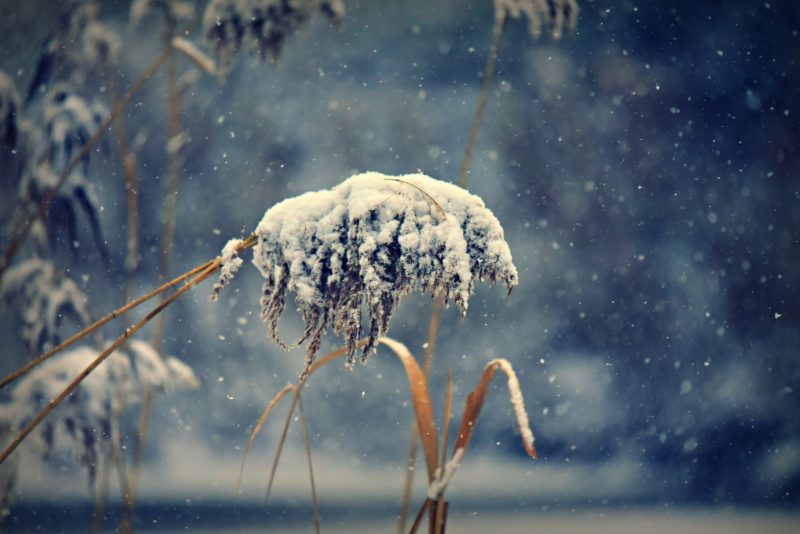It has become very well apparent that Winter is not letting up for this year in 2021. As harsh as it may seem, a lot of plants will be affected since some farmers and individuals plant around the beginning of April. Yet, here we are on April 20th, dealing with freezing temperatures and at least a few centimeters of snow on the ground.

So the big question, if your plant is not a planter’s pot but instead embedded in the ground… is there a way or a system to prevent losing that plant?
Even the smallest amount of frost can cause a plant to die. But we want to provide a few steps that can at least stimulate your plant long enough to survive a harsh or long-lasting Winter season.
Mulch
Mulch can protect that top layer of soil, so a plant’s roots are not receiving a massive amount of “shock-freeze.” A 5-inch layer of mulch can cause a barrier between a frost ground upheaval, which can happen from course wind that disturbs and removes the top layer of soil. Which can then cause plant roots to show, be aware of soil heaving because this can happen. Which allows the frost to have contact with the root itself.
Take Your Potted Plants Inside
That’s right! If you have potted plants outside, bring them inside to a spot in your home that does not have a severe temperature difference. You can create a warm environment by changing your thermostat to a temperature in the Spring/Summer where the plants thrive. Be sure to check which plants can handle the striking Winter sun. Sometimes the Winter sun is too bright and harsh for plants.
Warming Up Rose Bushes
Use some new soil to build up around the base of the rose bush. You will need at least a foot high to 18 inches high to protect the crown of the rose bush. This mound of soil should very much protect your prize winning or soon to be prize winning rose bush.
Zones
Understanding what zone you live in because in the United States there are different labeled zones. Each zone has information on the seasons and what areas are hit harder with the treacherous winter weather. Seasoned and experienced gardeners know all about what their zone has to offer, talk to someone in the area who is known as a renowned gardener.
Fruit & Vegetables Crops
Vegetable and fruit crops definitely feel the damage from a heavy or even a little frost. Fruits tend to need a constant 55 degree (12 Celsius) or above temperature. Most fruit and vegetable plants cannot withstand harsh cold weather, especially peppers and tomatoes.
What Works
Finding what works, honestly, can take a bit of time. If you’re new to gardening, it’s best to start with seedlings inside your home under a grow lamp. And water with only the suggested amount per day or week. By starting your food-based plants or tropical-based plants inside you’ll have a much better chance at keeping them throughout the season and year. Be aware that some plants can go into temporary shock when they are transplanted from pot to ground. Some will wilt and some will flourish, but water as directed, and keep an eye on the weather to make sure your plants thrive.













